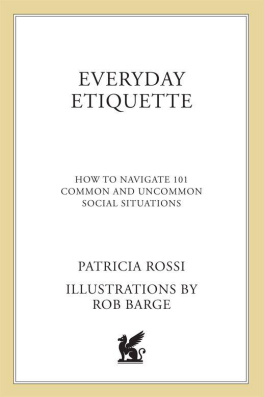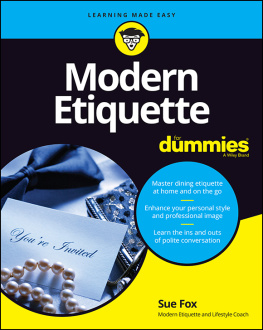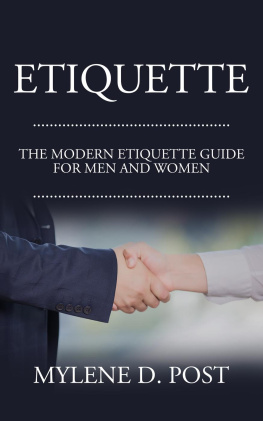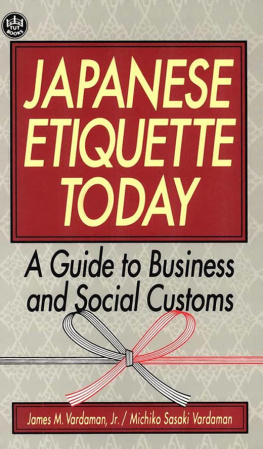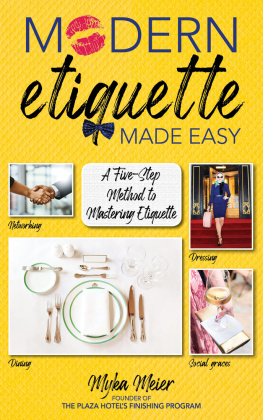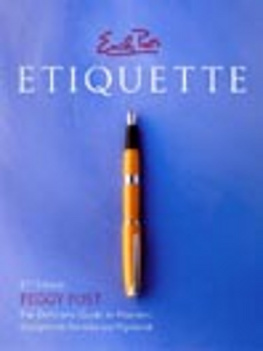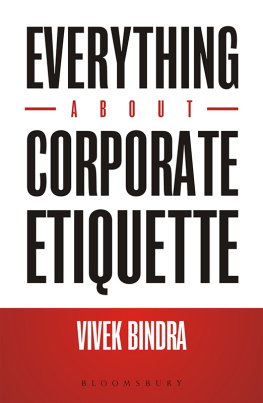
Contents
Acknowledgments
First and foremost, I want to thank God for being way down the road ahead of me.
I am thankful for Tom and Yvonne Cronin: for believing in me.
Elizabeth Beier: for line-editing the book. Whew, you know how to make words sing! The way you do your job, honor those around you, and the sound of your laugh is beauty in motion to me.
Michelle Richter: Thank you for being a smart and feisty editor, comedian, and drill sergeant. You give it your allmore than a person could hope for. Thanks for always picking up on the second ring.
Steve Cohen: The boys want to take you to school for show-and-tell. Thank you for the opportunity to ride out my dream through St. Martins. What an honor.
I also appreciate all of the cast and crew at St. Martins: Meg Drislane, Joseph Goldschein, Nadea Mina, and Danielle Fiorella.
Thanks to my wonderful literary agents, Tricia Davey and Beth Gilliland.
Rob Barge: Worlds best artist and humanitarianthanks for making me shine!
NBC Daytime: Larry Cotton, Cindi Edwards, Maureen Famiano, Deanna George, Lindsay MacDonald, Dave Nemeth, Rob Schweitzer, and April Wilson. Thank you for taking me under your wing, and for all the lessons and laughter on the show.
Jeff Houck: Thank you for being my trusted friend and editor at The Tampa Tribune, but Im still afraid of that mood ring you wear.
Kathy Zader, Nina Stanley, Dr. Mollie Marti, Dr. Daisy Sutherland, Michelle Cook-Kaufmann, and Aaron Foster: Thanks for your way with wordsthey have given me wings.
My gratitude to: The Capital Grille, Dawn and Jim Rainwater, Vanessa Malson, John Wallace, and Chef James Shields for being the best!
A very special thanks to the Tampa Tribune , for allowing me to use content from my previously published articles; to Dabney Porte, for the social media information; to Melissa Galt, for your expert social media advice for the book; and Bob Burg, for your input on the how-to-say-no section of this book. Your help was invaluable.
To all my Myrnas: Jodi Avery, Wendi Braswell, Chris Davis, Jodi Gatti, Suzi Johnson, Sylvia Karalis, Sandi McKenna, Diane Philips, and Melissa Vardas. Thank you for making me a better person, friend, and mother. I cherish all of you.
Thanks to my two sisters, Dee Akhavein and Joy Barnes: You have been my best teachers.
Thank you to my parents, Neil and the late Miriam Barnes, and to Bob and Marie Rossi and all my family in NY, NC, and FL.
Lastly, thank you to the late Fred Long: You made my life a good life.
Test Your Etiquette IQ
1. The proper place to wear a name tag?
A. On the left shoulder. B. On the right shoulder. C. On the left side near your waist.
2. When using one of the six global handshakes, which one is the best choice?
A. The limp fish. B. The web-to-web, two to three pumps. C. The double handshake, four to five pumps.
3. In the business arena
A. Only women stand for introductions and handshakes. B. Only men stand for introductions and handshakes. C. Both women and men stand for introductions and handshakes.
4. Successful mingling at networking situations dictates that you
A. Go straight to the bar and buffet. B. Stand tall and proud in the middle of the room and hope people introduce themselves. C. Introduce yourself to one person or a group of three or more people.
5. When inviting guests to lunch, is it proper protocol to ask where they would like to eat?
A. Giving them the choice shows respect and also insures that they will enjoy the meal. B. It puts too much pressure on the guests for them to decide how formal or informal. C. You are the host; you choose a restaurant that you know and trust.
6. When male and female business colleagues arrive at a door, who opens the door?
A. The woman waits for the man to open the door. B. The man waits for the woman to open the door. C. Whoever is closest or arrives first opens the door.
7. The easiest way to help your child make confident eye contact is to
A. Bribe them with candy. B. Have them look for the color of peoples eyes as they say hello. C. Have them wear sunglasses so it isnt so intimidating.
8. Is it acceptable to reply to voice-mail messages with an e-mail or a text?
A. If you prefer texting, then it is okay to respond to a voice mail with a text. B. If e-mailing will be faster and easier, then sending an e-mail is fine. C. The best option in replying is to follow the form of communication that the sender initiated.
9. In social and business networking situations, it is important to stand straight because, when you lean, you lose
A. 50 percent of your credibility. B. 10 percent of your credibility. C. 90 percent of your credibility.
10. Soft social skills are
A. How loud or soft we talk. B. Personal conduct codes that convey successful, professional, trustworthy, and corporative traits. C. When we wink or wave or give the thumbs-up sign.
11. We make a first and lasting impression within
A. The first thirty seconds of meeting someone. B. One to three seconds of meeting someone. C. Five to seven seconds of meeting someone.
12. If you are invited to a dinner party, the best gift to take to the host is
A. A music CD or picture frame. B. Flowers or wine. C. Coasters or chocolates.
13. If your family is invited to a friends house, is it okay to take your dog along?
A. No, as people might be allergic. B. Yes, your pet is part of the family. C. Only if it is a special holiday.
14. When attending a tennis match, is it okay to scream and cheer?
A. Yes, if its for your favorite player. B. No, you only scream and cheer at the end. C. No, loud noises distract the concentration of the players.
15. If invited to a private box at a sporting event, you
A. Take the best seat in the suite; after all, you are the guest. B. Ask the hosts where they would like you to sit. C. Invite all your friends to the private suite. ANSWERS 1. B 2. B 3. C 4. C 5. B & C 6. C 7. B 8. C 9. C 10. B 11. C 12. A & C 13. A 14. C 15. B
INTRODUCTION
For more than twenty years, I have helped people feel more confident and at ease in their everyday lives by teaching them about etiquette, protocol, and soft social skills. Whether Im doing one-on-one coaching or group classes, writing blogs, visiting the White House, or appearing in my nationally syndicated Manners Minute television segments, I always focus on the same core principles: kindness as opposed to formality, and relationships as opposed to rules.
I grew up in the small mill town of Bessemer City, North Carolina. I was a tomboy who spent most of my childhood climbing trees, outrunning the boys, and usually covered in mud. Despite these rambunctious addictions, I found myself enchanted by the Southern graces taught to me by the female matriarchs in my family and community.
Bessemer City certainly wasnt Charleston or Savannah. It wasnt even Charlotte, which was about an hour to the east of us, but seemed like a world away.
I can remember one spring day when, perched on the branch of a tall pine tree, slingshot in hand, I was stopped in my tracks at the sight of my mother down below in the driveway in a beautiful flowing gown getting into the car with my dad as they headed to the Annual Heart Ball in Charlotte.
Not long after that vision, I retired my BB gun, borrowed my grandmothers tea set, and started hosting tea parties for the neighborhood kids and their pets. The funny part was, because of a shortage of young girls on East Tennessee Avenue back in the seventies, my party guests usually consisted of the boys in the surrounding houses attending against their will in fear that Id beat them up if they didnt come!
Yearning for art, music, and culture, I headed for college in Florida the fall after graduating high school. A few years later I was spending summers in Europe while earning college credit. I was a sponge for all the glorious gifts I would discover and the unforgettable people I would meet from all different cultures and backgrounds.
Next page
